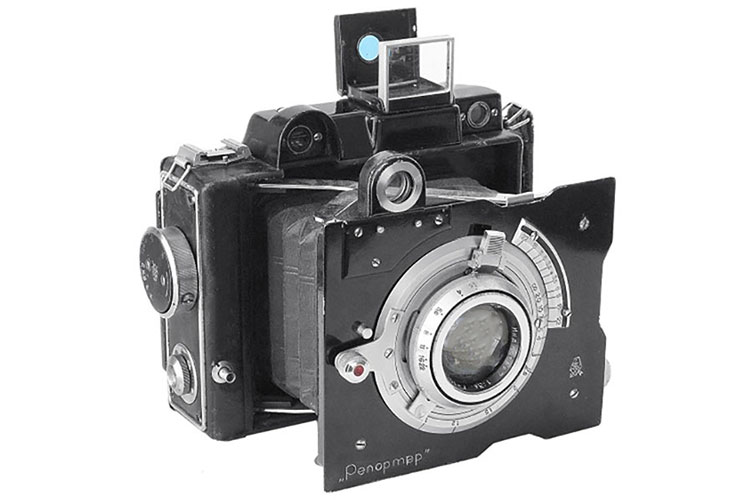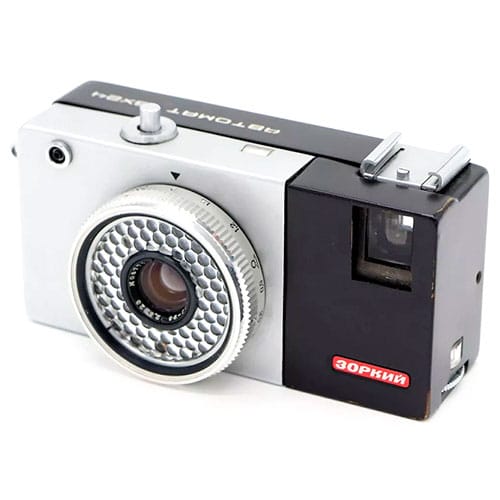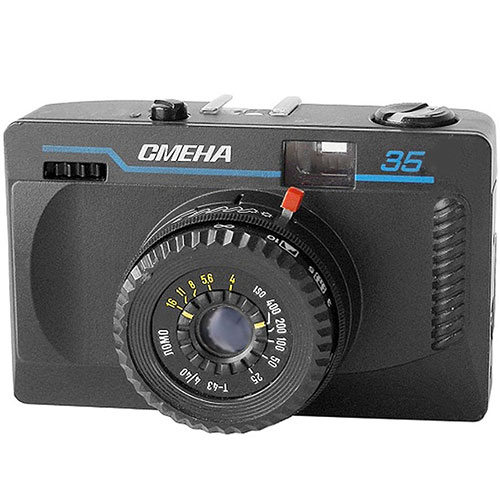Reporter
Reporter is a Soviet professional rangefinder press camera of 6.5×9 cm format manufactured by the GOMZ plant since 1939.

Reporter camera was released in very small quantities, less than 1000 copies. In this regard, it is very difficult to find both the camera itself and the data about it.
Reporter Specifications
- Type: 6.5×9 folding camera
- Manufacturer: GOMZ plant
- Production period: from 1937 to 1941
- Format: 6.5×9
- Lens mount: bayonet mount
- Lens: Industar-7 f3.5/105
- Shutter: cloth shutter with speeds from 1/5 to 1/1000
- Viewfinder: ground glass and rangefinder
- Lighmeter: none
- Flash synchronisation: none
- Selftimer: none
- Weight: 1460 grams


Reporter camera was made in a metal body and was equipped with Industar-7 3.5/105 lenses with a bayonet mount. The camera was also equipped with a shutter with a speed range from 1/5 to 1/1000 seconds, as well as shutter speeds B and Д.



Focusing occurred not only with the help of a range finder but also with ground glass. On the camera, it was possible to use both glass plates and large-format films of 6.5×9 cm. It was also planned to establish the release of interchangeable lenses, which did not take place.

Serial production began in 1939 and continued until the start of World War II.
In 1961, a medium format camera with the same name was developed at the Arsenal factory (where the Kiev cameras were produced), but its mass production was never started.

The Soviet Union was an interesting place. The authorities were very fond of declaring that the country is the most advanced in the world, despite the fact that everything that could be destroyed was destroyed in the Soviet Union.
But at the same time, there were needs that had to be covered. For example, the authorities were faced with the task of spreading Soviet propaganda throughout the world. But this was impossible without the availability of professional photo and video equipment in the country. First, the engineers were tasked with copying German cameras (mainly cameras from Zeiss Ikon), and in this way appeared EFTE, ARFO, and Fotocor.
But these were amateur-level cameras. To cover the professional segment, the Soviet authorities set engineers to create a professional camera. But this camera suffered the fate of almost all the professional cameras created in the USSR – because of the extreme poverty of the population and the beginning of World War II, the production of cameras stopped.







